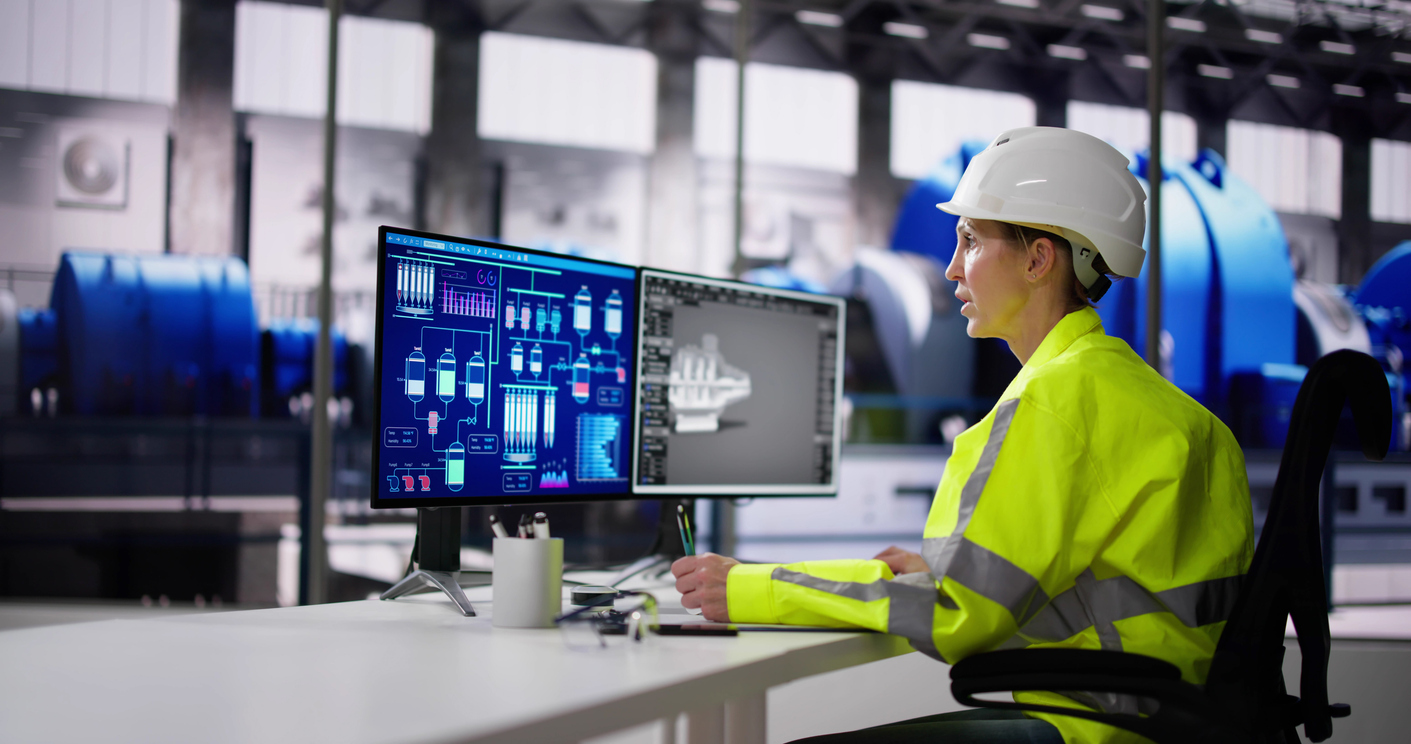“To be able to break the vicious circle these companies found themselves in, they need to step above the frame and search for ways to find empty trucks and keep them fully loaded. They need to go beyond their mini-network and explore thousands of opportunities out there to find efficiency.”
Dejan Pokrajac, Sr. Engineering & Delivery Manager, HTEC
The pandemic brought the supply chain to a standstill, forcing some of the biggest transportation and logistics companies to reimagine their supply chain strategies to survive. On the other hand, these supply chain challenges are also a major opportunity for both suppliers and shippers to adapt to discomfort and explore different ways to get ahead of the curve.
We talked with Dejan Pokrajac, senior engineering and delivery manager at HTEC, about the pain points companies face and the opportunities they need to seize to reset their supply chain strategies for the next major shake-up.
What are the top aspects of your work at HTEC that drive you the most?
Dejan Pokrajac: Being part of HTEC is a unique opportunity to be exposed to the most ground-breaking projects across different technologies and industries globally. This brings us to another value—a chance to work with some of the smartest people, entrepreneurs, investors, and innovators who want to change the world.
Finally, I strongly believe that HTEC is a great playground where creativity and excellence converge; a place where innovative ideas are born, fueled by our people’s ambitions to continuously learn and grow.
This, from my perspective, is one of my main drivers, as it allows me to work side by side with inspiring minds, great leaders, and leaders in the making.
“Imagine the impact you can create when you are working on product innovation in perpetuity, and you are helping these products grow and build a better future for all of us.”
Based on your experience working with clients, what are the trends you are seeing related to collaboration between supply chain partners, the factory and engineering?
DP: There is a clear distinction between companies that do not want to change their processes as they feel comfortable with their existing system, and the ones that are turning their attention to technologies to help them get behind the wheel.
The truth is that no matter how big or small, even the most efficient and well-organized supply chain systems will become obsolete at some point. This is when they realize they need to start with a clean sheet of paper, create new processes, and design supply chain strategies for the future.
It is exciting to see how more and more transportation and logistics companies are realizing, especially now after the pandemic, that there are structural opportunities to build a more resilient supply chain strategy. Things are moving forward. Companies are looking for solutions that will help them collect data from different streams into one centralized place and use this data not only for planning and predictions but also for smarter decision-making.
And the future is here. From building a technology layer that analyzes demand streams and identifies optimal network coordination to developing a platform that gives companies insights into location, routes, and fleet capacity in real time to building robotic warehouse systems that boost the efficiency of pick/pack operations, there are numerous ways organizations can leverage technology to improve supply chain strategies.
Based on what you have seen, what is the status of companies that digitized their supply chain operations before COVID-19 compared to those that did not?
DP: With COVID-19, all supply chain issues surfaced. The crisis forced many shippers to shut down. While some companies figured out how to respond and make an anti-fragile system that would help them serve the growing, five-times bigger demand than prior to COVID, many were also trying to glue the system together and survive.
A McKinsey study on the impact of this extended disruption found something very interesting. While 75% of companies surveyed faced problems with their supplier base, production, and distribution, 85% said they struggled with ‘insufficient digital technologies’ in the supply chain.
In our Fast Forward podcast, Anshu Prasad [CEO of Leaf Logistics] explained that some of the company’s colleagues had to even shut down 30% of their supply chain overnight when the pandemic broke out. Anshu also pointed out that because supply chain systems are brittle and fragile, companies need to build an anti-fragile system to be prepared and find their way out once the hurricane starts instead of bandaging their way through and hoping for a better future.
We saw that every storm causes acceleration, and the supply chain is no different. The change is happening, but it will surely take a while.
Manual work is still enormous. For example, one simple thing is the documentation signing process, which is still manual, time-consuming, and painful, but I am happy to see that great solutions are emerging. To improve the supply chain, CEOs should build resilience into their supply chain strategies. Supply chain disruption caused by the pandemic is a crisis but also an opportunity.
At HTEC, we have witnessed the growing demand for technology-powered innovation in the transport and logistics industry. How does HTEC help companies address these trends?
DP: Over the years, HTEC has had the opportunity to help companies bring their ideas to life, from concept to commercial impact. These partnerships have also brought us another great value – deep tech domain expertise and knowledge about the complex challenges in logistics and transportation.
We learned a lot about logistics problems in past years but also how to integrate with accelerators like Project44, Fourkites, Trimble, and Onfleet to speed up product time to market for our clients.
One such project is the OrbitMI platform that digitalizes our client’s (Stena) entire tanker shipping business, offering their personnel ways to increase their productivity and make informed decisions based on real-time fleet data.
Another successful project innovation was born out of our partnership with Leaf Logistics, where we worked together to build a technology layer that would help them optimize route management, save costs, and improve customer satisfaction on many levels.
We empower companies to build more resilient supply chains. Besides having proven knowledge in the latest technologies such as data science, machine learning, and AI, our team of experts are highly skilled in business optimization and digital and secure payments, which are important steps in the shipment execution process.
Which technology, in your opinion, will have the biggest impact on the supply chain strategies of the future?
DP: IoT, for sure. COVID-related circumstances have given companies an opportunity to adopt new technologies. While some companies might stick to their old proven processes and systems, others are acknowledging the value that logistics tracking and transparency bring to their business. And this is where IoT comes to the stage. And, to make smart use of the data gathered, we will have to leverage data science, machine learning, and AI.
IoT powers data collection from interaction points, factory automation, shipment tracking via GPS, and machine-to-machine (M2M) and machine-to-people (M2P) communications.
Imagine having access to data collected in real-time from carriers and shippers and using it for better analysis and decision making. The greatest benefit here comes from the quality and huge volume of data. IoT reduces waste and helps optimize the data collection process.
On top of this, 5G will be used for better network connectivity across large geographic regions. Many global giants, like Verizon, are investing in 5G to enhance the capabilities of IoT. The wider spectrum powered by 5G increases the overall bandwidth of cellular networks, allowing additional devices to be connected. Plus, 5G impacts IoT by enhancing AR and VR experiences.
All of this will unlock more value for supply chain disrupters such as Leaf or Stena and open up a plethora of new business opportunities.
Are today’s supply chain issues here to stay, or will we be thinking about different challenges in two or three years?
DP: The transportation and logistics industry is built on the notion of competition. A lot of people are competing as hard as possible, especially in the US. This leads to a lack of coordination and, consequently, empty miles, which are a waste of fuel, money, and time.
To make things worse, both suppliers and shippers stand to lose much from many empty miles. On an industry level, about a third of our trucks run on our highways empty, which is a global problem, even if you are a big shipper or a buyer. The fact that more than 70% of US carrier companies have 1 to 3 trucks and that one-third of trucks are driving empty shows how challenging it is to have full visibility and proper data acquisition.
To break the vicious circle these companies found themselves in, they need to step above the frame and search for ways to find empty trucks and keep them fully loaded. They need to go beyond their mini-network and explore thousands of opportunities outside this network to find efficiency.
As Anshu Prasad pointed out in our podcast: “Optimizing for the little mini-network that you see, you’re going to miss the ocean…and how much of the pattern can you see in your mini-network so you can operate that better, more intelligently, with better reliability and lower costs? But then, outside your network, and roughly even for some of the very large shippers that we’re working with by millions of dollars of trucking every year, there are a thousand times as many opportunities outside of their mini-network as there are inside to find efficiency.”
It will be great to see who will win the game and connect all the pieces in a smart network that addresses the planning and execution challenges I mentioned above.
I hope that once businesses create this data network, more products will be on the market that help create a more resilient supply chain with better visibility and predictability.
—
Want to learn more about how HTEC’s technology expertise can transform your business? Explore our Technical Strategy and Transport & Logistics capabilities.






